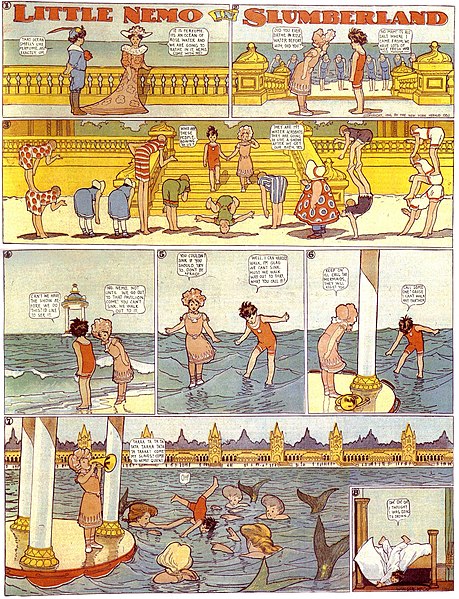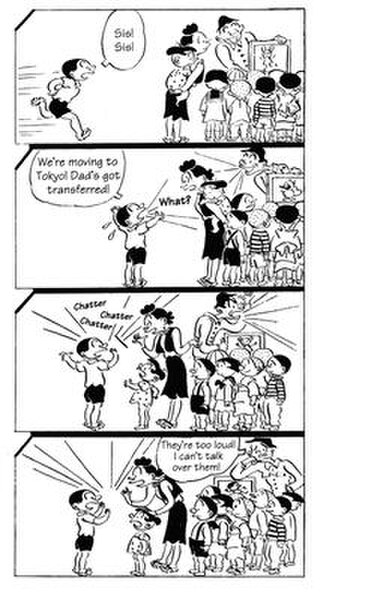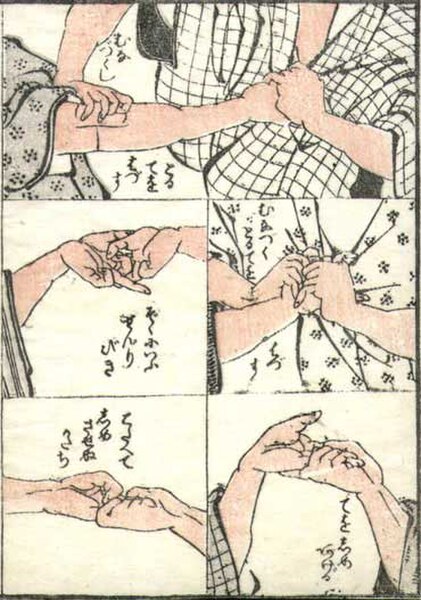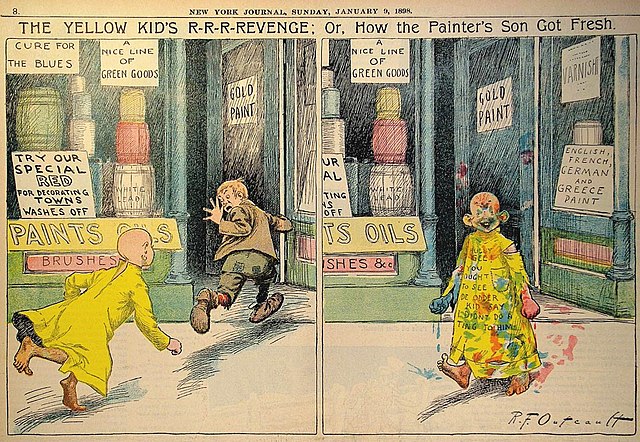Manga are comics or graphic novels originating from Japan. Most manga conform to a style developed in Japan in the late 19th century, and the form has a long history in earlier Japanese art. The term manga is used in Japan to refer to both comics and cartooning. Outside of Japan, the word is typically used to refer to comics originally published in Japan.
Example of a manga starring Wikipe-tan
A kami-shibai story teller from Sazae-san by Machiko Hasegawa. Sazae appears with her hair in a bun.
Delegates of 3rd Asian Cartoon Exhibition, held at Tokyo (Annual Manga Exhibition) by The Japan Foundation
A manga store in Japan
Comics are a medium used to express ideas with images, often combined with text or other visual information. It typically takes the form of a sequence of panels of images. Textual devices such as speech balloons, captions, and onomatopoeia can indicate dialogue, narration, sound effects, or other information. There is no consensus among theorists and historians on a definition of comics; some emphasize the combination of images and text, some sequentiality or other image relations, and others historical aspects such as mass reproduction or the use of recurring characters. Cartooning and other forms of illustration are the most common image-making means in comics; Photo comics is a form that uses photographic images. Common forms include comic strips, editorial and gag cartoons, and comic books. Since the late 20th century, bound volumes such as graphic novels, comic albums, and tankōbon have become increasingly common, along with webcomics as well as scientific/medical comics.

Little Nemo, August 19, 1906 strip
Manga Hokusai, early 19th century
Ally Sloper in Some of the Mysteries of Loan and Discount Charles Henry Ross, 1867
The Yellow Kid R. F. Outcault, 1898








